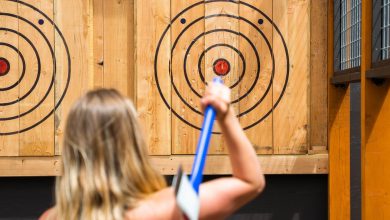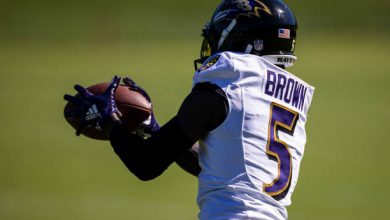
The first essential that should be instilled in young players is the understanding that basketball is a team sport. If there’s one thing you want to instil in them, it should be this: no team will ever win unless each and every member of the team participates. Everyone on the squad must learn how to dribble, pass, defend, use a basketball hoop rebounder, and hustle if they are to perform effectively and achieve success. Indicate that unless everyone plays their share, the team has little chance of being successful on a continual basis.
Team attitude can only be developed by collective action. Make it clear to your athletes that the team always takes precedence over the individual. It is crucial to emphasize the concept that every player is essential and that everyone is expected to contribute to the team’s effort. Most essential, you must really believe what you are saying. Avoid falling into the trap of playing the same five players over and over again and then pushing the others to the side. Make it clear to every participant that he or she will be expected to participate and perform at all times throughout every game.
And keep in mind that if you have faith in your team, they will rise to the occasion. Not only does receiving praise make a player feel good, but it also has the effect of raising the player’s overall level of performance.
Dribbling
The only way to improve in dribbling, like with any other basketball ability, is to put in the time and effort. Players should practice dribbling so that they can dribble with each hand as well. It’s important to emphasize to younger players that the sooner you encourage them to utilize both hands, the better.
Make it clear to the children that just practising dribbling during practice is insufficient. If they really want to become good at this fundamental basketball talent, they will have to put in the necessary time and effort. When they are hanging about with their buddies at home, in the backyard, on the playground, or while watching television, they may learn how to dribble.
In order for them to get more comfortable dribbling without looking down at the ball, they must first become familiar with how the ball feels in their hands. Make it clear to players that this will take time and that they should not get disheartened by the first difficulties of dribbling a basketball.
Coaching tip:
Lay down around four or five chairs (or cones) to divide the court evenly along the center of the playing surface. At a time, one player tries to dribble along with the court as quickly as possible while weaving around the seats. While doing this activity, players must keep their heads up and their eyes off the ball in order to avoid injury.
Rebounding
Positioning is everything when it comes to rebounding net basketball. As soon as a shot is taken, the defensive player’s responsibility is to spin around and “box out” the opposing player in order to prevent the shot from going in. As a matter of logic, the defensive player should be in a better position to grab the rebound if they are placed between the hoop and the opposing player.
Immediately after an attempted field goal is made. The defensive player rotates his or her complete body to face the hoop. At the same time, the player must be able to “feel” where the shooter is in order for the defender to keep the offensive player away from the basketball. Every scrimmage should include repetitions of the rebounding position. After all, the best coaches will tell you that defense and rebounding are key factors in winning games.
Coaching tip:
Defending the free-throw line consists of three players: one on the left corner, one in the center of the free-throw line. And the other on the right corner of the line. Against the defenders, three more players take up a position. While the coach shoots the ball, the defensive players practice boxing out the offensive players. And all six players go for the rebound at the end of the quarter.
Shooting
Basketball shooting requires the same amount of practice as dribbling: endless repetitions and more repetitions. A 10-foot-high hoop might be intimidating for young players who are used to hoisting standard-sized basketballs.
Using a smaller-sized ball to teach your younger players basic shooting methods can be a good idea. Also, try allowing them to practice shooting at a hoop that is just 7 or 8 feet high and can be adjusted.
Focus on resting the ball on the fingers rather than in the palm while practicing proper technique. After pressing the ball with your fingers, it should slide off your fingertips. The dominant hand should be in charge of loading the ball into the shooting position. One hand is needed to maintain balance while playing the ball with the other hand.
The shooter should concentrate on the basket and aim for the back of the rim when he or she gets to the free-throw line in such a situation. Rather than launching the ball in a straight path toward the basket, it should be launched on a gentle trajectory. Using his or her fingers and wrist, the shooter should propel the ball towards the target in the hoop. Players should be instructed to break towards the hoop if the ball does not fall into the basket. In the event that the ball does not go in, players should always “follow the shot”. Consequently, they might position themselves to compete for a comeback victory.
Coaching tip:
Separate the squad into two groups and place them at each end of the court on either side of the court. This drill, which is similar to H-O-R-S-E, involves one player taking a shot from anywhere on the floor. If he makes the shot, then every other player is required to make the identical shot as he did. A free throw is worth one point, whereas all other baskets are worth two points. The goal is to reach 21 points as quickly as possible while remaining within the time limit. When a player reaches the age of 21, he or she must exit the game. When just one player remains, the exercise is declared complete.
Passing
It is necessary for any football player to be proficient in two types of passes, namely, the chest pass. And the bounce pass: Players must first master the fundamentals before progressing to the next level.
Practice should include the chest pass on a regular basis. To guide the ball towards a teammate, teach your players to grip the ball in both hands. And to push the ball from their chests with both hands. Catching the ball in mid-air with both hands is recommended by the coach.
The bounce pass is quite similar to the chest pass in terms of its core mechanics and execution. Still, both hands are used to throw the ball, and it is intended for one of the teammates. Instead of bouncing once, the ball is received a second time this time. The fact that the bounce pass is often delivered to a player who is on the move makes this pass a bit more difficult to execute well. Because of this, the player who is passing must be able to properly predict how rapidly his or her partner will move.
Coaching tip:
Set up two lines of players at one end of the court, facing each other. When you blow the whistle, they both begin sprinting down the court. Parallel to each other, while passing the ball back and forth. It’s critical that they vary their passes (chest and bounce) and move swiftly in order to succeed. When they get near to the opposite end of the court. The person who has the ball should attempt a lay-up to seal the win. The key to success is rapid passing.
Defense
A man-to-man defense and a zone defense are the two most fundamental defensive systems used in basketball. Each has a distinct benefit that may be simply presented to young players in a simple manner. Using the example of man-to-man defense, each player is assigned to protect a different player from the opposing team. This assignment is normally made on the fly at the beginning of the game. When each player pairs up with the person who is nearest to him or her in terms of distance. If there is a clear mismatch, switch up the assignments as soon as you get the chance.
Remembering the jersey number of the opposing player. Is the most effective method of teaching younger players to keep track of whoever they are protecting. To avoid confusion on the next play, when substitutions begin. The player who is leaving the court should notify the arriving teammate, “I’m protecting number 20”. So that there is no doubt as to who is guarding whom.
When playing man-to-man defense, the defensive player just follows the offensive player wherever he or she goes. That entails a great deal of movement. The most important thing for the defender to do is to maintain a physical barrier between the attacking player and the hoop. Otherwise, the offensive player will have an easy time shooting, rebounding, and distributing the ball.
Conclusion
Finally, there are several approaches to coaching basketball that may be used. Some of the best basketball coaches in the world may argue for hours on end about various aspects of player development and being a basketball rebounder. As much as we have faith in our coaches, you may wish to make some changes. You will have a better understanding of various movements by studying these basketball principles. But in the end, it is up to you to make the final decision as a coach.





